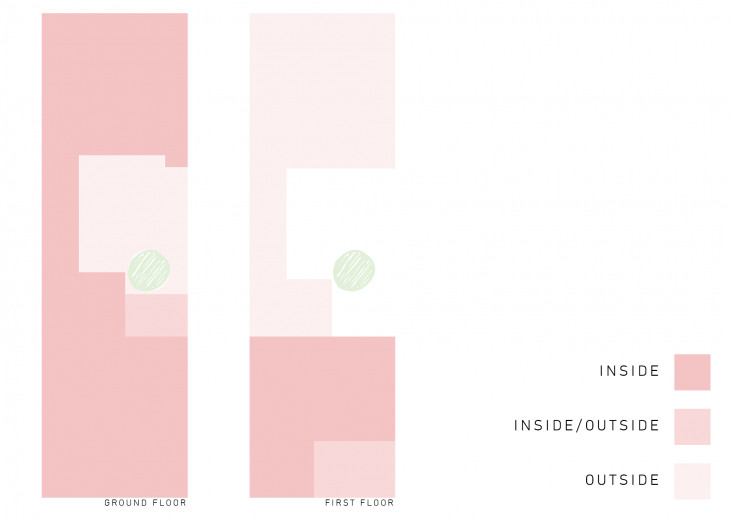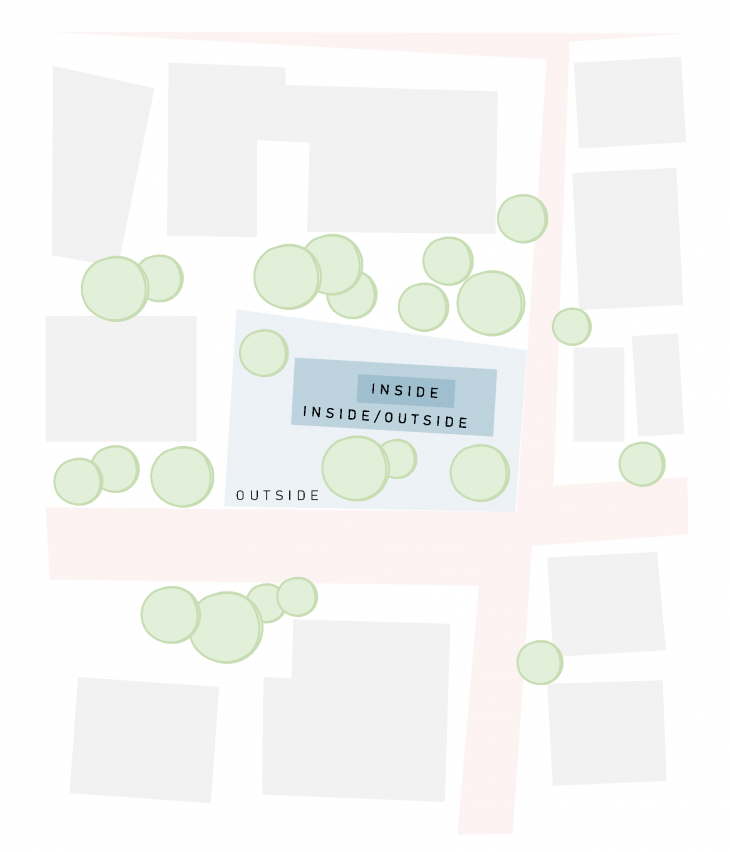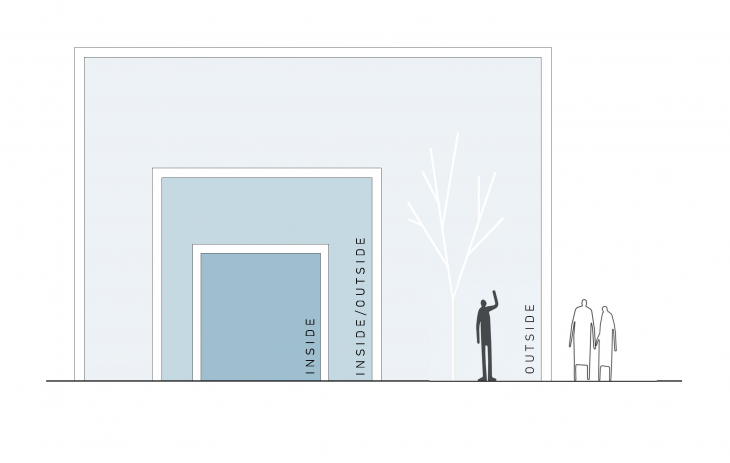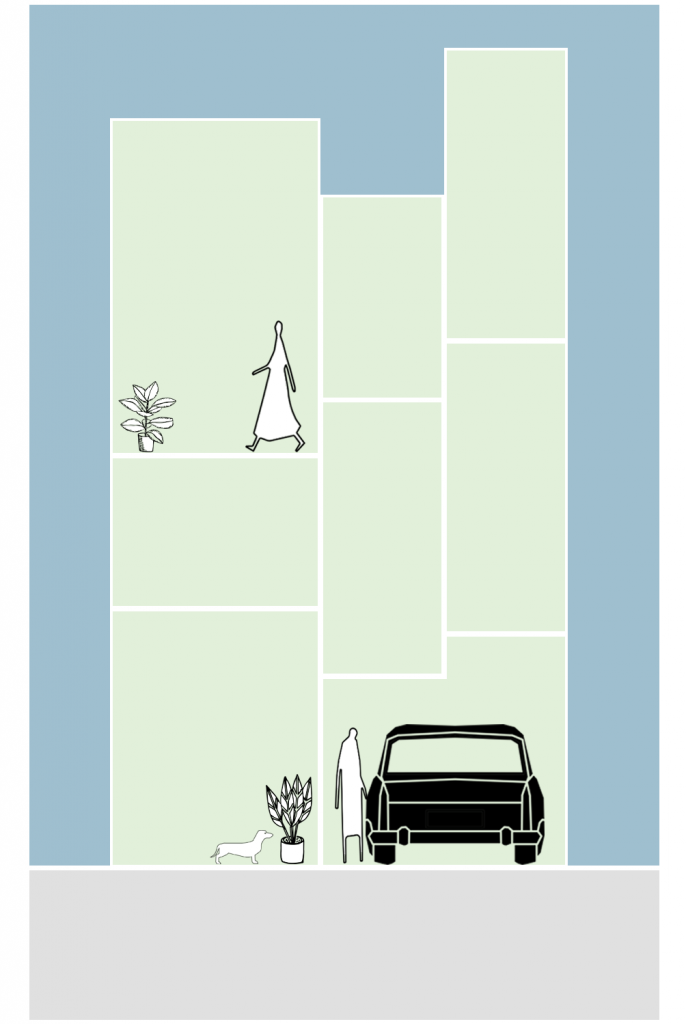INTRODUCTION
Given the pandemic of COVID-19, at least half of the world’s population has been in lockdown. Our routines have changed, and for some our homes have become our workplace. The anxiety of the global health situation, the social isolation, and the confined spaces in which people are living have been taking a toll on people’s mental health.
Our research consists in designing for the mental well-being of isolated individuals by focusing on stimulation and socialization. We explore the psychological effects through the integration of exterior landscapes and biophilic design, as well as by facilitating socialization through the design of the space. In addition, we also delve into how a dwelling can be designed to keep the inhabitants entertained intellectually and physically to promote mental health.
The research study encompasses the following ideas:
• Understanding human psyche and determining design solutions to tap into human cognition to induce calmness and relaxation
• The mental effects of integrating the interior spaces with the exterior landscape
• The added benefits to isolated persons offered by biophilic design (reducing stress and anxiety)
• Design accommodations for different forms of socializing either physically or virtually
• Design features and solutions to combat boredom
• Design accommodations for maintaining mental health via physical movement or exercise
Nature as Pleasure
Environmental factors influence our mental health, whether in a positive or negative manner. Nature and daylight are both examples of factors that can have positive effects. Since evolution has benefited those living in non-threatening environments, our perception of nature has evolved to be one of comfort. Patterns make us engage, which is usually why humans usually find comfort in nature and biophilic design.
Attention vs Contemplation
Not all stimuli are created equal. Nature has been thought to be a stimulus that restores the effects of the fatigue caused by modern-day stimuli. Our current lifestyle is an over-stimulation that is often labelled as ‘hard-attention’, as these stimuli require our full attention, even when it’s involuntary. In contrast, nature
is considered a ‘soft-attention’ given that it allows for a voluntary engagement, and a slow contemplation that can restore the effects of fatigue caused by our daily over-stimulation. This lowers our stress levels and brings us pleasure.
Sunlight for Physical and Mental Health
In addition, sunlight provides vitamin D which improves our mood by producing serotonin, therefore reducing the risk of cardiovascular diseases as well. Having access to daylight also helps maintain circadian rhythms which helps in hormonal balances, alertness, cognitive performance, and even affection.
Social Interaction and Human Contact
Moreover, socializing has been associated with a longer lifespan, a stronger immune system, a decrease in depression. Psychologically, social interactions can lower our cortisol levels through the release of oxytocin and dopamine. By creating a sense of community and close friendships, we are happier, have higher cognitive abilities, and live longer. What happens when that is all taken away? This lack of socialization is what our research is mainly focused on given the isolate nature of the project.
Self-isolation deprives you of socializing, which in turn deprives you of all its benefits. By longing for socialization or human contact, it is easy to fall into depression. The uncertainty of a pandemic can add fear, as the unstable economy can create even more anxiety, and a confined space can limit physical activity (all essential factors to increasing mental health).
CASE STUDIES
Casa Gilardi, México
Luis Barragán
Built around a central patio with a Jacaranda tree, the distribution of the house allows for access to daylight and privacy. The house plays with what is considered to be inside and outside, as well as bringing natural elements inside the house. Light and water can be seen as part of the program and also as a big part of what
brings pleasure to the house. In addition, the selection of colors inspired by the Mexican artist Chucho Reyes reflect the culture and context of the project, while creating warm and enjoyable spaces.

House N, Japan
Sou Fujimoto
By creating three different shells, the house is separated into a gradient of outside and inside. The program is adjusted accordingly. The outer shell is considered a covered garden, the inner shell contains the interior more personal spaces, while the shell in between provides a grey area between these two. Not only does it provide a game between the inside and outside of the house, but it also provides a range of privacy. By having a nested concept, Sou Fujimoto blurs the lines between inside/outside, and public/private. In doing so, the architect achieves a greater integration of nature, daylight and socialization beyond the house.


House NA, Japan
Sou Fujimoto
While the residence is three stories high, there are 21 different levels. Each space is located at a different level, which properly separates every space without the use of a solid wall, prompting more socialization. Every level is then connected with steps, encouraging the inhabitants to exercise to circulate within the home. Furthermore, while the house offers little privacy, the windows allow for natural daylight.

DESIGN PRINCIPLES DERIVED
Allowing Design To Be Informed By Human Cognition
It will help ease stress and anxiety by inducing feelings of relaxation and calmness.
Increased Interaction With Nature
Reduces heart rate and stress levels and boosts productivity. It can also improve air quality and oxygen levels.
Increasing Natural Light And Ventilation
Creates an energizing environment, which helps ensures healthy and comfortable living conditions. Daylight increases cognitive levels while boosting serotonin.
Use of Natural Materials and Textures
Materials like wood and stonework stimulate the senses, which help to energize the occupants and reduce stress levels. Textures engage the sense of touch, while materiality and colors appeal to emotions.
Separation of Working/Living/Sleeping Areas
Dedicating spaces based on use allows for user personalization and comfort.
Creating Recuperative Spaces
Allocated zones within the house to change up the experience for individuals. Creating the circulation of the house to incite movement. Keeping occupants active is important for physical health and to decrease anxiety.
Designing for Flexibility
By creating areas that can be changed, the occupant has a higher interaction with the space and creates greater mental engagement.
Social Interaction
Include areas that facilitate physical social interactions from a distance. There should also be a designated interior space that allows virtual socializing.
Intellectual Stimulation
Interior features that allow intellectual stimulation, such as the inclusion of bookshelves and a space for hobbies and crafts.
Design for the Mental Wellbeing of Isolated Individuals is a project of IaaC, Institute for Advanced Architecture of Catalonia
developed at Master in Advanced Ecological Buildings and Biocities in 19/20 by:
Students: Maitri Joy Uka, Camille Garnier
Faculty: Michael Salka, Jordi Pratt, Daniel Ibañez, Vicente Guallart